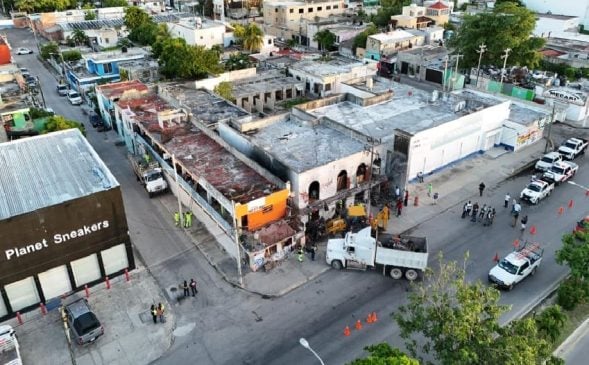Cancun, Q.R. — The Secretary of Infrastructure, Communications, and Transportation (SICT) says the city’s new bridge will be operational in December. SICT head Jesús Antonio Esteva Medina, reported that the 11.2 kilometer-long Nichupté Vehicular Bridge is 85 percent complete.
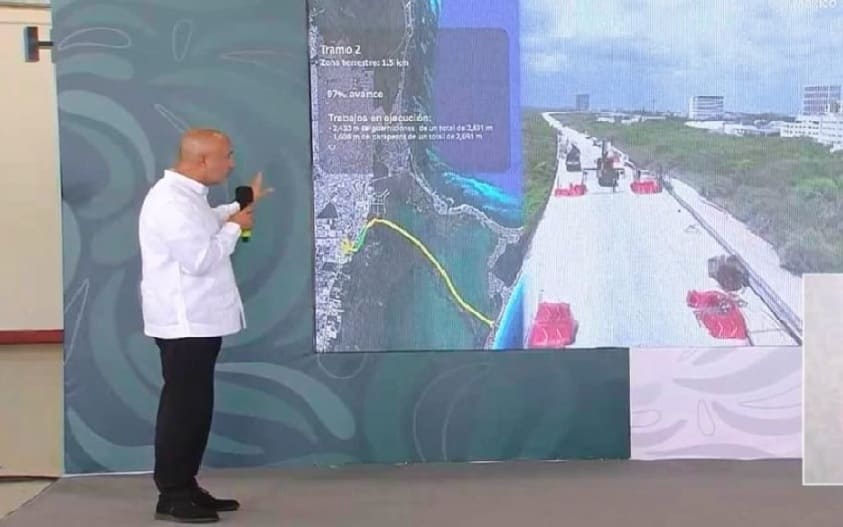
The Secretary stated that the bridge is 11.2 kilometers long and consists of five sections, 6.5 kilometers over the lagoon and 1.5 kilometers over land. The third section, the mangrove, is an area of 700 meters. The bridge construction also consisted of two interchanges and a red metal arch.
He explained that section 1, the Colosio Junction, is almost complete, with only expansion joints being worked on while waiting for paving conditions to be ready. The land area covers 1.5 km and is already structurally complete and that work is underway on the parapets and curbs.
In section 3, the mangrove area, a construction process was carried out using Top Down, which was used from top to bottom to protect the ecological zone.
“We’re about to complete the dismantling of this innovative system. It will be finished this month, so we’ll begin finishing the parapets, expansion joints and rolling surface,” he explained.
Regarding the steel bridge, it is already finished and the structure is complete, only the slab and pavements are still needed which will be ready when the connection to the other spans is established. The structure is 90 percent complete.
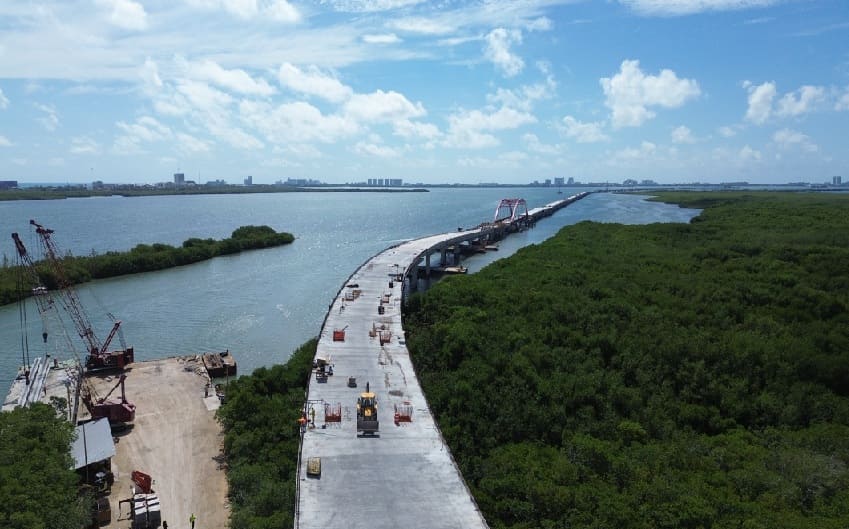
In section 4 of the lagoon area where the work is currently at its highest, there are six simultaneous work fronts. Three are working on columns and capitals and another three are installing beams.
“To put things into perspective, we’re missing two piles of the total of 780. Eleven were made in the last period. We’re missing about 20 columns. One hundred were made in the last period and we’re missing about 70 capitals. One hundred were also made in the last period.
“As for heads, 44 were assembled in the last two months and 259 beams in the last two months, which are very high yields. And finally, the last stage, where we’re at 50 percent is in tablet assembly. We’ve assembled 11,000 of a total of 32,000.”
He acknowledged the complexity of this stage of the water installation, “but fortunately, we have the necessary workforce and equipment.”
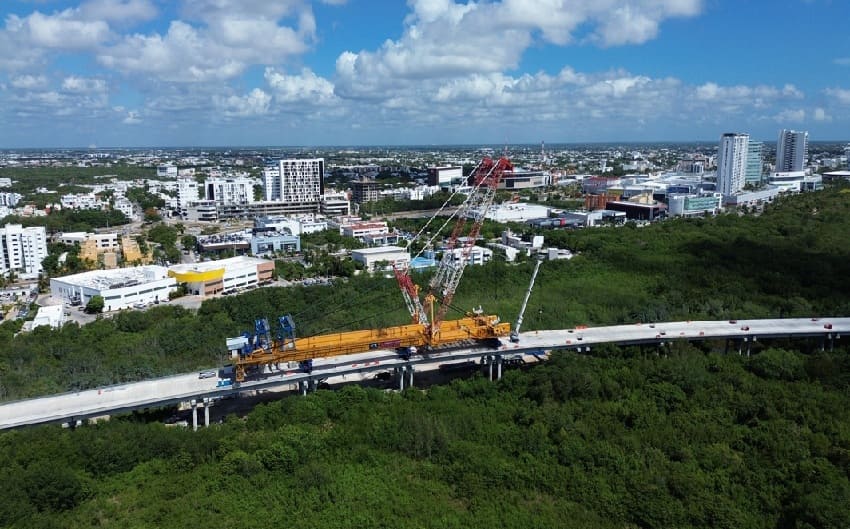
In section 5 of the Kukulkán interchange, one branch is finished and the second is nearing completion. Work is underway on the final sections. “Modeling has already been done for a bridge that will span the interchange.”
He also highlighted a prefabrication area. “We have three plants working at maximum capacity to complete all prefabrication work.”
The capitals will be completed in September, the beams and slabs will be installed in October and the final work will be carried out in November and December.
The bridge project includes a 15-meter viaduct with three lanes, one in each direction, and one reversible lane in the center, as well as a bike lane.
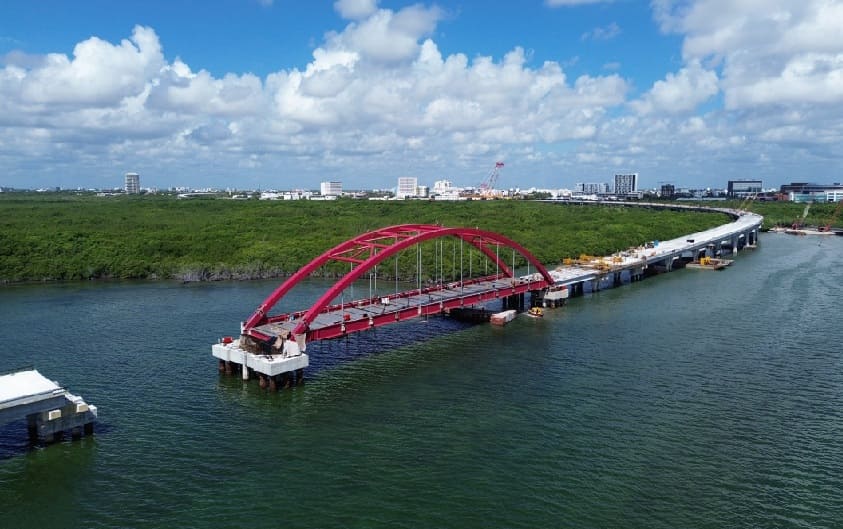
In July, the bridge was reported to have an overall average completion rate of 90 percent. Jesús Antonio Esteva Medina added that once finished, the bridge will benefit 1.3 million residents and save 45 minutes in travel time. The projected average daily traffic is 12,612 vehicles. Construction work on the bridge will be completed for operation in December 2025 at a cost, to date, of 8.6 billion pesos.
